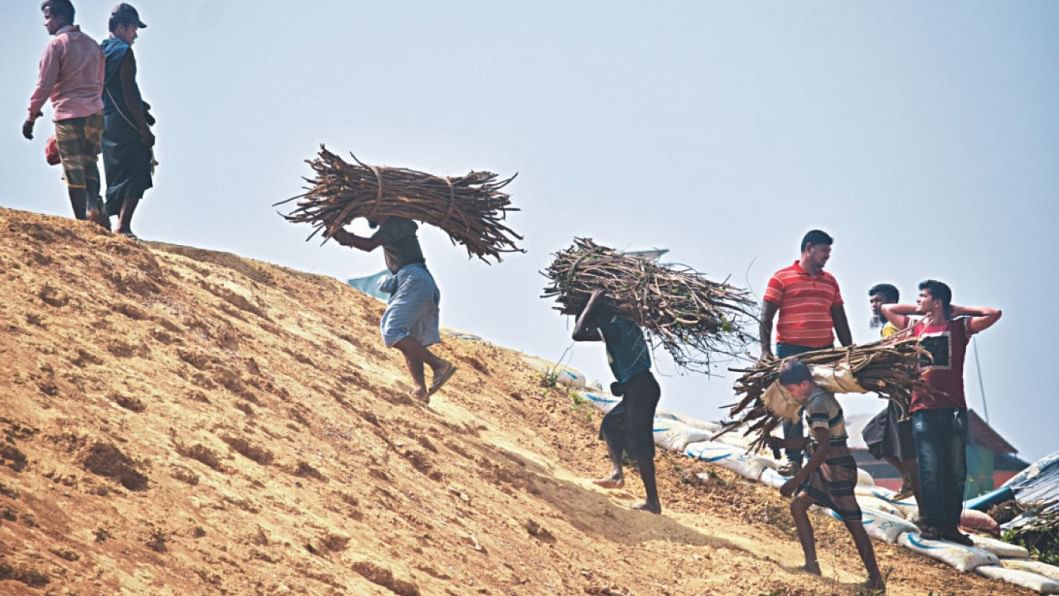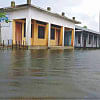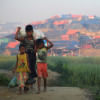Have we already started seeing the Rohingya refugee crisis differently?

Every year, the Bangladesh government, and the UN agencies and their Bangladeshi and international partners prepare a "Joint Response Plan" (JRP) for the ongoing Rohingya refugee crisis in Bangladesh. The "2022 JRP" explains why USD 881 million is needed this year for 919,000 Rohingyas and 541,000 Bangladeshi host communities and how it would be spent. As a climate change and biodiversity conservation enthusiast, I see three major, but inter-connected shifts, in the latest JRP compared with the previous ones.
First, the 2022 JRP has five strategic objectives to support the affected Bangladeshi and Rohingya populations. The first four objectives focus on refugees' repatriation, ensuring their protection in the camps, providing humanitarian assistance both to the refugees and the hosts, and supporting host communities' wellbeing in Ukhiya and Teknaf. The fifth strategic objective reads: "Strengthen disaster risk management and combat the effects of climate change." Although disaster risk management has always been a strong element of the previous JRPs, climate change or climate resilience was only casually mentioned in the past narratives.
With this shift in focus, to mitigate and adapt to the climate change impacts through environmental protection and rehabilitation, the proposed activities in 2022 in the Cox's Bazar region include promotion of renewable and cleaner energy, adoption of sustainable solid-waste management, undertaking plantation and watershed management, facilitating climate-resilient water management system, and supporting climate-smart livelihoods in agricultural and non-agricultural sectors. Bhasan Char is an off-shore island where 100,000 Rohingya refugees are gradually being relocated to reduce the congestion in 33 camps in Ukhiya and Teknaf. Activities proposed there for 2022 include building resilience of the refugees to climate shocks and ecosystem degradation through watershed management, provision of sufficient drainage, and flood control measures.
It is, however, not quite clear how much thought was put into the using of the words "combat the effects of climate change" in the fifth strategic objective of the 2022 JRP and subsequent descriptions. But the concepts and terms, such as climate change, adaptation, mitigation, and resilience indicate long-term contexts and actions – something that the Rohingya refugee crisis isn't expected, or meant, to have.
Second, the past JRPs strongly acknowledged the unprecedented environmental destruction this refugee crisis had caused in the Cox's Bazar-Teknaf Peninsula since late 2017. That's why "environment and ecosystem rehabilitation" has always been considered as a cross-cutting issue in those JRPs. But the 2022 JRP clearly declares its plan to "mitigate the adverse impacts on the environment exacerbated by the Rohingya exodus and their prolonged stay in Bangladesh." The planned actions include restoration of ecosystems, promotion of reforestation, and development of waste management plans. Outside the camps, it also envisages working with the host communities to rehabilitate the degraded environment and ecosystem as a part of improving their well-being. On Bhasan Char, "ecosystem conservation" is one of the four pillars of the "Skills Development/Livelihoods/Environment" sector. The 2022 JRP also expects to monitor the ecosystems of this island and to rehabilitate, as required. As seen above, in the latest JRP, efforts to address climate change, to rehabilitate degraded ecosystems, and to manage disaster risks are very much inter-linked. This is more evident in the third and final shift we find in the 2022 JRP.
Over the last few years, we have widely been talking about "Nature-based Solutions" (NbS). When we protect, restore, create, or sustainably manage our natural or modified ecosystems (e.g., forests, hills, rivers, haors, even towns and cities) to tackle a wide range of problems, such as climate change, natural calamities, food scarcity or water insecurity, we practice NbS. The beauty of NbS is that it not only ensures human wellbeing, but also improves our biodiversity. In 2022, NbS finds its place for the first time in the JRP – an exciting example of how the concept of NbS has been mainstreamed into the refugee crisis response in Bangladesh.
On August 25, 2020, on the third anniversary of the Rohingya refugee crisis, I wrote an article in The Daily Star ("What role do nature-based solutions play in the Rohingya refugee crisis?") to show how different NbS interventions were practiced without uttering the term NbS: reforestation of degraded camp areas, stabilisation of hill-slopes from landslides with vetiver grass and legume saplings, restoration of hill-stream banks, and re-excavation of water reservoir to store flood water as a part of watershed management.
The 2022 JRP envisages implementing some of these NbS interventions as a part of its activities under the "Site Management and Site Development" sector in Cox's Bazar camp areas, including plantation for slope stabilisation and restoration of natural drainage to reduce soil erosion and flooding. On Bhasan Char, NbS may include mangroves (plantation and protection) to further stabilise the embankments for improved coastal flood protection and coastal erosion control. These and other examples noted earlier clearly show how NbS approach has been mainstreamed into different sectors by the humanitarian community working with the Bangladesh government to address the Rohingya humanitarian crisis.
Of course, while implementing NbS interventions for the Rohingya refugees or the host communities, the concerned agencies need to remember several crucial issues. We need to understand the breadth and depth of the challenges – environmental degradation, climate shocks and stresses, or disaster risks – we want to address with an NbS intervention. We need to understand the trade-offs around that selected NbS – what opportunities people are going to lose now and what benefits they will gain in the long run. Everyone who would be affected by that NbS must understand them and agree to strike-a-balance. Since it is a long-term action, we cannot just treat NbS like a traditional, time-bound development project. We must have a management system in place so that we can adapt to any changes happening around the NbS intervention, so that it can support us effectively, sustainably, and ensure net biodiversity benefits.
All three aspects discussed above indicate "long-term" responses to the on-going Rohingya refugee crisis. Is the 2022 Joint Response Plan (JRP), therefore, highlighting a strategic and philosophical shift in our response to this humanitarian crisis by showing it through an environmental sustainability lens? Or, am I reading it wrongly?
Dr Haseeb Md Irfanullah is an independent consultant working on environment, climate change, and research systems. His Twitter handle is @hmirfanullah

 For all latest news, follow The Daily Star's Google News channel.
For all latest news, follow The Daily Star's Google News channel. 








Comments